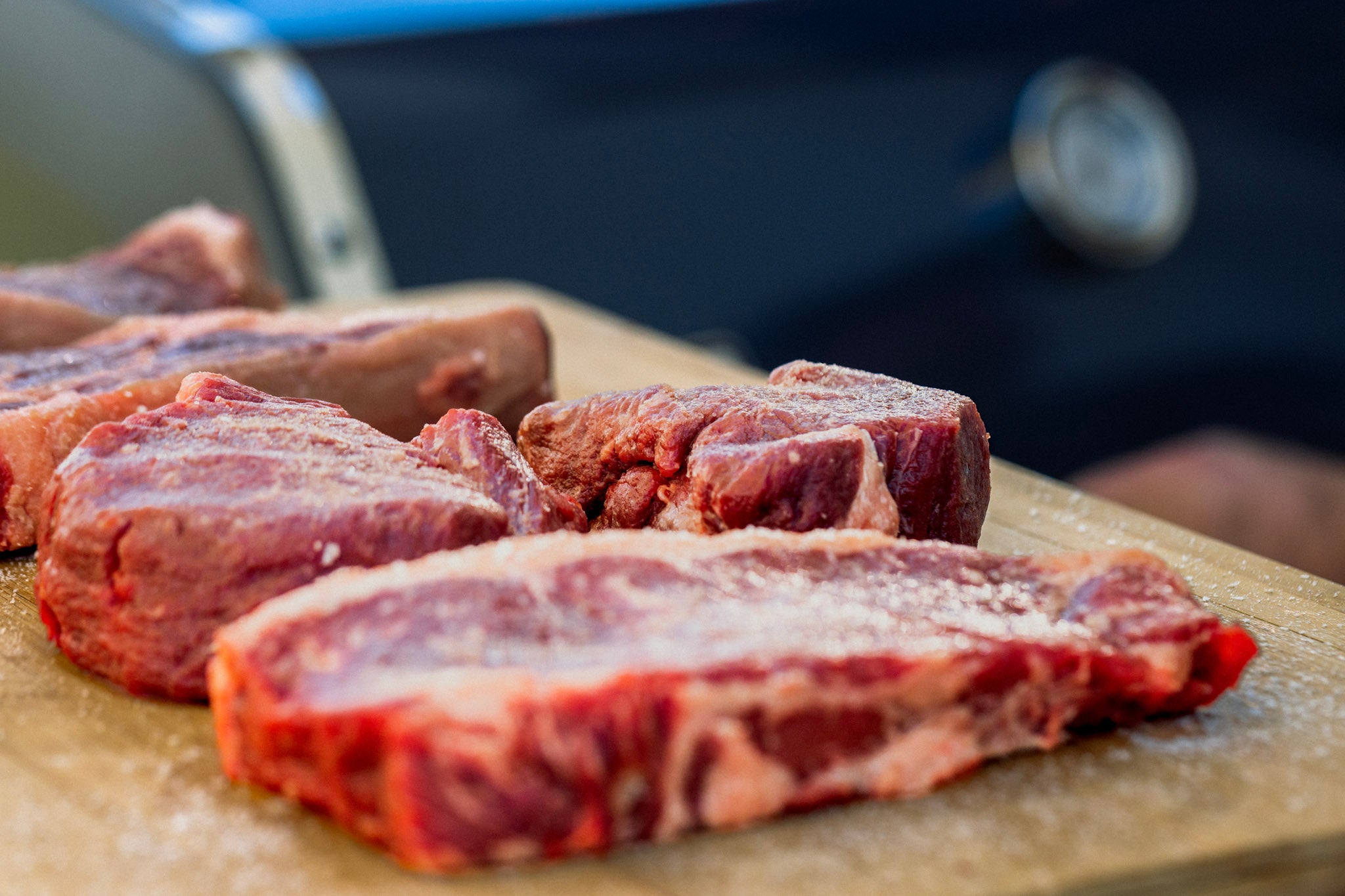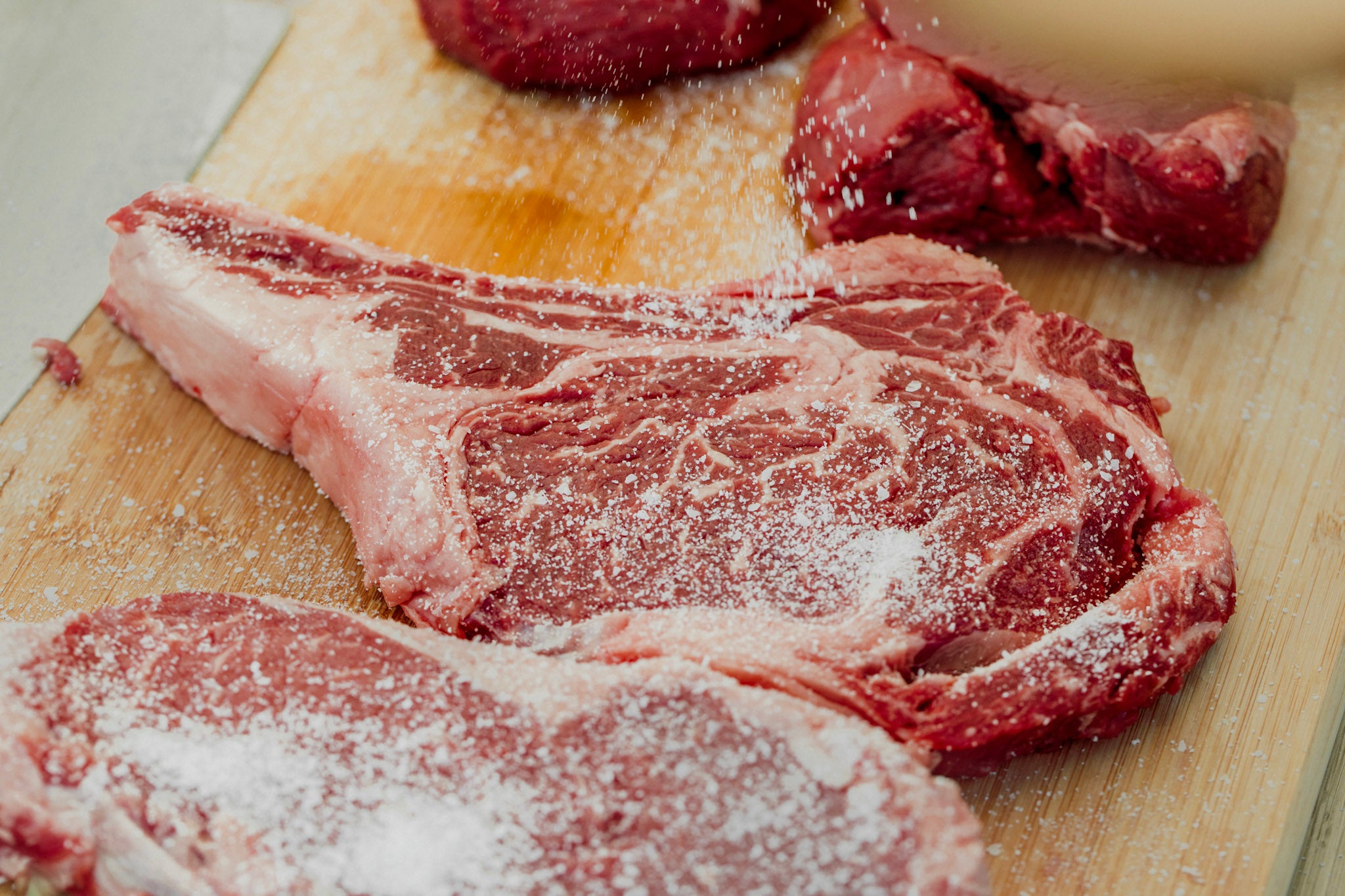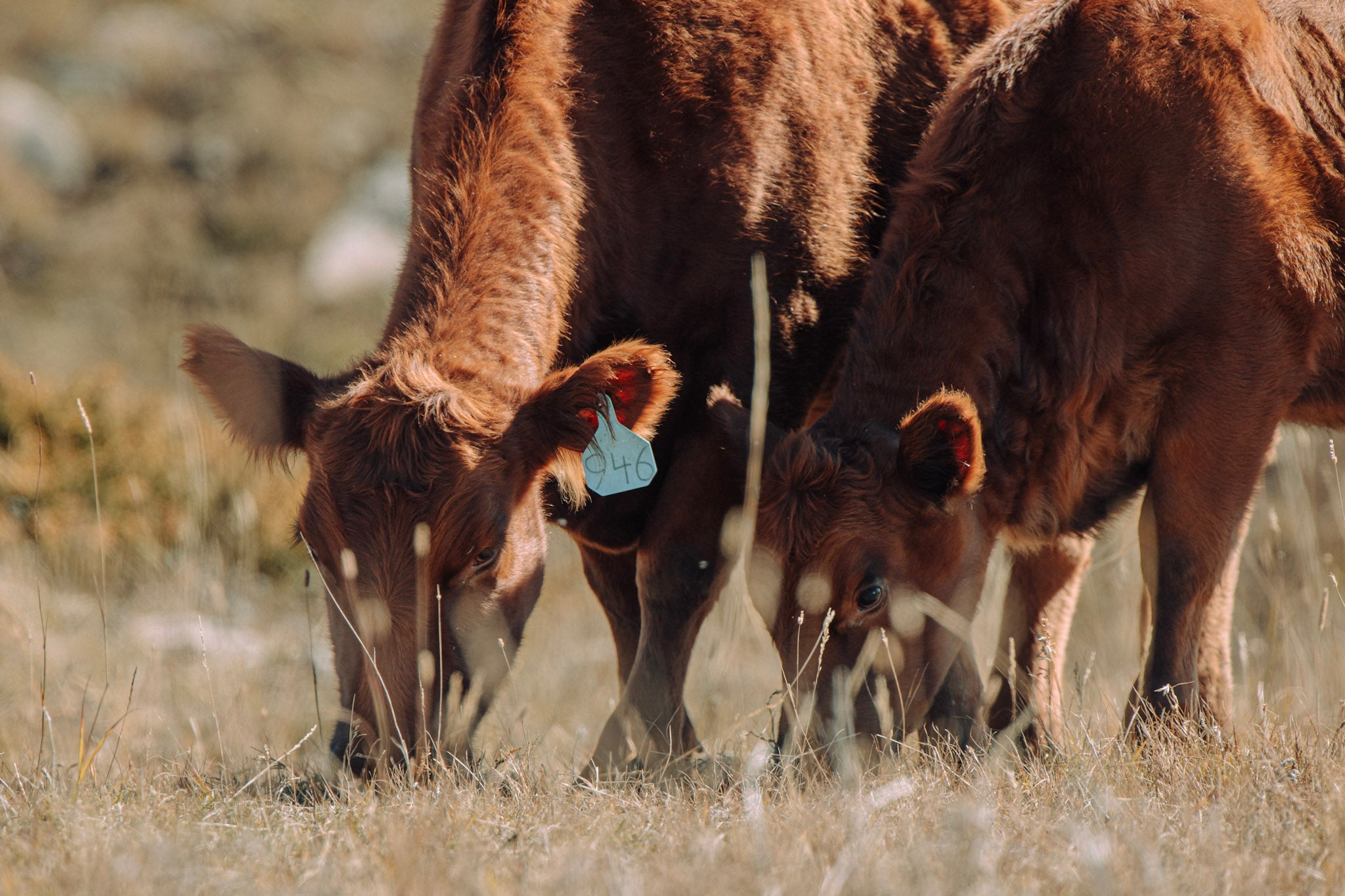
Understanding the Dry Aging Process: Unlocking the Secrets of Flavorful Beef
Time has a good track record. Sure, you might not love aging when it comes to your body, but you sure love aged food. Cheese, alcohol, beef—many of your favorite indulgences started as something fresh and were allowed to get “less fresh” before reaching your mouth.
Dry-aging beef isn’t the sexiest topic and from a purely scientific perspective, it can sound unappetizing. However, the process not only yields the juiciest, tenderest, most flavorful cuts of meat, but it’s a timeless method of preservation and it’s super cool. (At least, we think so!) This post tells you everything you need to know about dry-aged beef and why you should consider adding it to your weekly menu.
What is dry aging, and how does it enhance the flavor of beef?
Take wine for example. It’s bottled and placed in a temperature-controlled cellar for a given amount of time. The best wine cellars have a temperature between 55°F and 59°F and a humidity of 50 to 80%. These conditions allow the wine to develop what sommeliers describe as “natural character.” Think richer flavor and better mouthfeel.
Dry-aging beef is like cellaring wine. It involves storing large cuts of beef in a humidity-and-temperature-controlled environment that keeps them from spoiling. Chilled at the dry-aged beef temperature of 32 to 39.2°F, the beef ages for 7 to 120 days, 30 being the norm. Several things occur during this time.
- When beef ages for 30 days, it loses 15% of its total weight in water. One pound of beef shrinks to 13.6 ounces. The concentrated tissue lends to a beefier flavor.
- As moisture is drawn from the beef, the fat portion retains more water than the lean portion, causing the lean muscle to shrink around the fat. This makes the fat more pronounced and gives the beef a robust, buttery taste.
- Enzymes break down proteins, fats, and connective tissue, changing the beef’s texture.
- Juices are absorbed into the meat.
- The beef’s color darkens.
- And thanks to the airflow within the dry-aging chamber, the meat develops a nice crust.
Simply put, dry-aging means allowing the beef to develop its “natural character” within a controlled environment so that it offers richer flavor and better mouthfeel i.e., texture. This isn’t a new culinary practice. Before the invention of refrigeration, dry-aging was a primary method of preserving beef, along with pickling, brining, and smoking. Guess people have always had a knack for storing food in cool, damp places and realizing the food tastes pretty good after sitting for a while.
Dry-aged beef questions—the speed round:
Is dry-aged beef really better than regular beef? What is special about dry-aged beef?
“Better” is subjective and boils down to preference. Dry-aged beef is generally tenderer and more flavorful than non-dry-aged beef. During the dry-aging process, enzymes break down proteins, fats, and connective tissue, which makes the beef softer and easier to digest. Also, beef loses moisture as it dry ages. This causes the beef muscle to shrink and highlights the fat. Concentrated meat plus buttery fat equals incredible flavors. So, if you like delicious, melt-in-your-mouth beef, you may consider dry-aged beef better than the alternatives. Give it a try!
Does dry-aged beef taste good?
If you’re wondering what dry-aged beef tastes like, think about cheese and other aged foods. A bit nutty with a robust beefy profile—that’s dry-aged beef. The amount of time spent dry-aging plays a huge role in flavor intensity. The longer beef ages, the beefier it becomes. Sample beef that’s been dry-aged for 21 days before graduating to beef that’s been dry-aged for longer.
How does dry-aged beef not rot?
Three words: temperature, humidity, airflow. Dry-aging beef is about control. The dry-aging chamber is kept at a temperature of 32 to 39.2°F, which prevents bad bacteria growth, while the proper airflow and humidity control moisture loss and crust. All of this prevents the beef from rotting, instead allowing it to age safely. Now, dry-aging beef does mean subjecting the meat to molds and yeasts. This allows the breakdown of tough tissue. However, the dry-aging environment controls decomposition (for lack of a better word).
Why is it important to select high-quality beef for the dry-aging process?
After the dry-aging process, the dried-out layer around the beef’s exterior (the crust) is sliced away, leaving a delicious, dark-red piece of meat. The bones and fat act as a shield for the beef, protecting the meaty muscle from moisture loss and developing too much of a crust, hence why prime rib is a popular dry-aging cut. High-quality beef has the perfect ratio of fat and muscle, which makes dry-aging all the more successful. (Beef is usually dry-aged as large individual cuts or the whole carcass.)
How long does the dry-aging process typically take, and how does it impact the flavor and texture of the beef?
Dry-aging beef can take anywhere from a couple of weeks to several months. As mentioned above, the longer beef ages, the tenderer and beefier it becomes. Like with any other aged food, the beef’s flavor grows more intense with time. For example, 500 day dry-aged beef is basically a mummy when it’s removed from the dry-aging chamber. Once the crust is pried off, the meat has a dark red color and nutty aroma. Cooked, it has an acquired taste, making it a delicacy more than a go-to meal.
Eating beef that’s been dry-aged for 60 to 90 days will give you the nutty, beefy taste without overwhelming your taste buds. Start with a 21-day dry-age, then work your way up from there.
For the longest time, dry-aged beef was only available from steakhouses and fancy butchers. Now it’s sold in high-end grocery stores and online.
At Lazy T Ranch, we’re proud to make dry-aged beef more accessible and take immense care, not only with our dry-aging process but how we raise our cattle. Bring our ranch to your table and taste how dry-aging beef makes all the difference. One bite, and you’ll be hooked!


